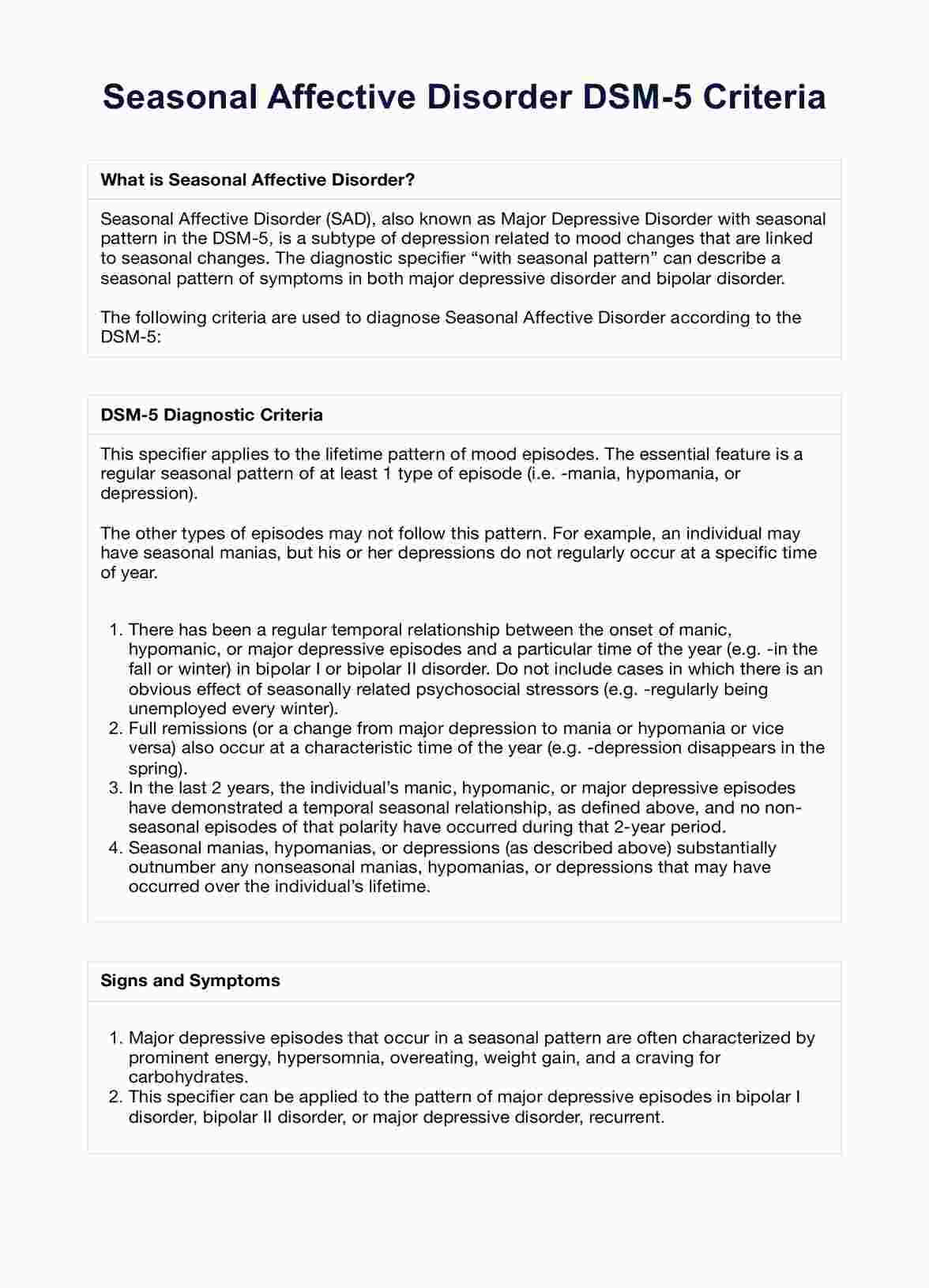Seasonal affective disorder (SAD) is a subtype of depression that occurs at a specific time of the year, usually in winter, while bipolar disorder is characterized by mood swings between manic and depressive episodes that are not necessarily tied to seasons.

Seasonal Affective Disorder DSM 5 Criteria
Understand the DSM-5 criteria for Seasonal Affective Disorder (SAD) with our comprehensive template, helping you accurately diagnose SAD.
Use Template
Seasonal Affective Disorder DSM 5 Criteria Template
Commonly asked questions
Seasonal affective disorder can be considered a disability if it significantly impairs an individual's ability to function in daily life. It's important to seek professional diagnosis and support.
The ICD-10 code for seasonal affective disorder is F33.3, categorized under major depressive disorder, recurrent, with seasonal pattern.
EHR and practice management software
Get started for free
*No credit card required
Free
$0/usd
Unlimited clients
Telehealth
1GB of storage
Client portal text
Automated billing and online payments











